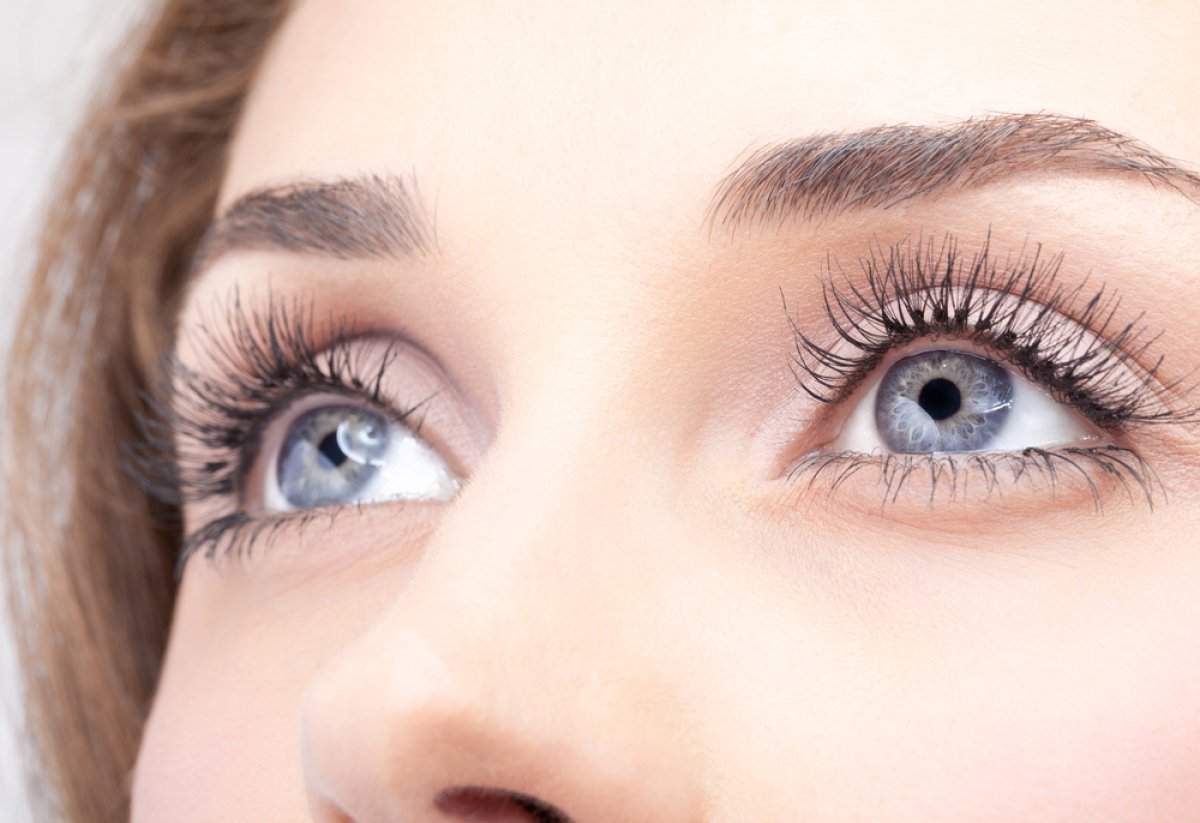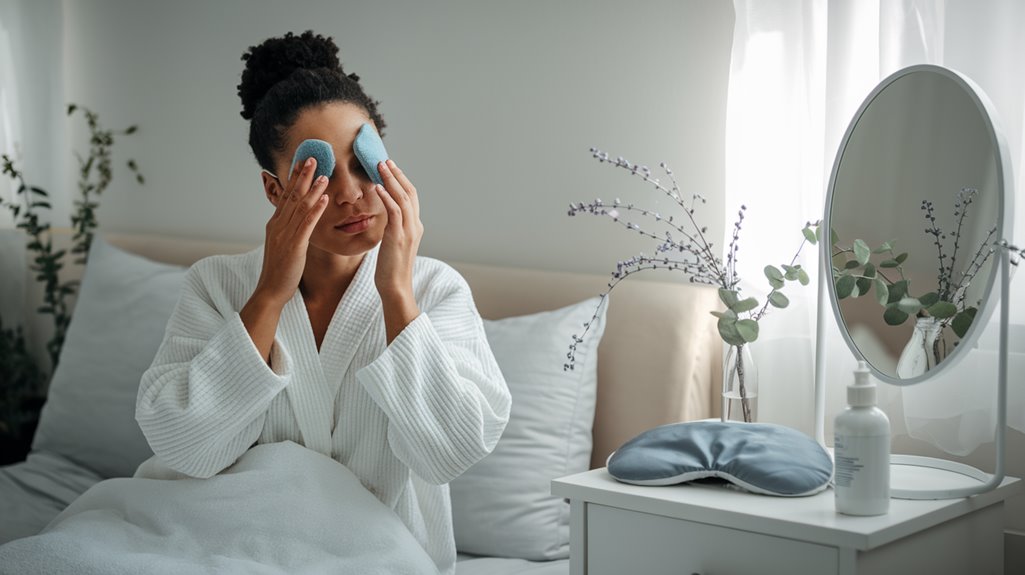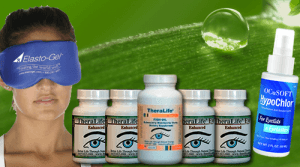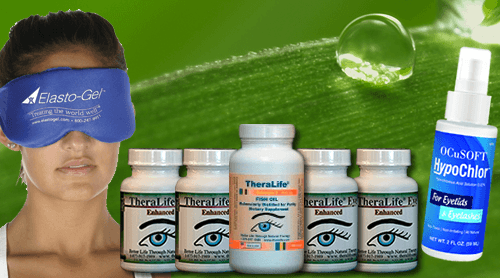To manage blepharitis effectively, consider integrating TheraLife’s products into your routine. TheraLife offers a range of solutions that aim to alleviate symptoms of blepharitis and enhance overall eye health. Their products are designed to improve tear film quality, reduce inflammation, and provide relief from irritation. By incorporating these products into your daily habits, you can experience significant comfort improvements. Additionally, TheraLife provides resources to educate customers on managing various eye conditions, ensuring a comprehensive approach to eye care.
Best Blepharitis Treatment From TheraLife
Add To Cartrstanding and control of this persistent condition.
Key Takeaways
- Apply warm compresses daily to improve meibomian gland function and reduce irritation.
- Maintain an anti-inflammatory diet rich in omega-3s to enhance tear film and decrease dryness.
- Identify and minimize exposure to environmental triggers like dust and pollen.
- Choose hypoallergenic eyewear and cosmetics to prevent eyelid irritation.
- Practice relaxation techniques, including mindful breathing and eyelid massage, to alleviate eye strain.
Establishing a Consistent Eye Hygiene Routine
When managing blepharitis, establishing a consistent eye hygiene routine is essential for mitigating symptoms and preventing flare-ups. Incorporating eye compresses into your daily regimen can greatly enhance symptom control.
Apply a warm compress to your eyelids for approximately 5-10 minutes, promoting the liquefaction of meibomian gland secretions and alleviating inflammation. Following this, perform an eyelid massage by gently rolling your fingertips in a circular motion along the eyelid margins.
This technique facilitates the expression of glandular blockage, reducing eyelid crusting and irritation. Evidence suggests that regular implementation of these methods can decrease bacterial loads and improve ocular surface health.
Adopting this routine enhances overall eyelid hygiene, vital in managing blepharitis effectively and sustainably over time. Consistent use of omega-3 fatty acids has been shown to offer anti-inflammatory benefits, contributing to improved symptom management.
Adopting a Diet
Although diet alone can’t cure it, adopting a blepharitis-friendly diet can greatly support overall ocular health and potentially mitigate symptoms.
Consuming anti-inflammatory foods, such as leafy greens, berries, and fatty fish, may help reduce inflammation associated with it These foods are rich in antioxidants and essential nutrients that contribute to eye health.
Integrating omega-3 supplements into your diet is another evidence-based strategy. Omega-3 fatty acids, found in fish oil and flaxseed oil, are known to enhance the lipid layer of the tear film, reducing dryness and irritation. Studies indicate that these supplements can improve symptoms by modulating inflammatory processes. Regularly incorporating these dietary elements may provide adjunctive benefits in managing it, enhancing comfort and ocular function. Additionally, adhering to Autoimmune Diet (AIP) guidelines, which focus on reducing inflammation and supporting gut health, may offer further relief for individuals experiencing ocular discomfort.
Managing Environmental Triggers
While dietary modifications can support ocular health, managing environmental triggers is also a key component in controlling blepharitis symptoms. Identifying irritants such as dust, smoke, and pollen in your surroundings is essential. These elements can exacerbate inflammation of the eyelids, leading to increased discomfort. Employing air purifiers and maintaining clean living spaces are effective strategies for reducing allergens and particulates in the air. Consider using hypoallergenic bedding and ensuring proper ventilation to minimize exposure to potential triggers. Regularly cleaning your home’s HVAC system filters can further decrease airborne irritants. Consistent management of these environmental factors has been shown to alleviate blepharitis symptoms effectively. Tear film health is critical in maintaining ocular surface integrity and function, which is vital in managing blepharitis symptoms.
Selecting the Right Eyewear and Cosmetics
Choosing the right eyewear and cosmetics plays a critical role in managing blepharitis effectively. Opt for hypoallergenic frame styles to reduce pressure on the eyelids, minimizing irritation. Frames with adjustable nose pads can enhance comfort by distributing weight evenly. When selecting cosmetics, scrutinize cosmetic ingredients to avoid allergens and irritants. Products labeled as “fragrance-free” and “for sensitive eyes” are recommended. For individuals dealing with it, maintaining regular eyelid hygiene is crucial to prevent symptom recurrence.
| Aspect | Recommendation | Benefit |
|---|---|---|
| Frame Styles | Hypoallergenic materials | Reduces eyelid irritation |
| Frame Styles | Adjustable nose pads | Enhances comfort |
| Cosmetic Ingredients | Fragrance-free products | Minimizes allergic reactions |
| Cosmetic Ingredients | Products for sensitive eyes | Decreases potential irritants |
Such choices can greatly alleviate symptoms, enhancing ocular health and patient comfort. Prioritize evidence-based selections to manage blepharitis effectively.
Incorporating Relaxation Techniques for Eye Relief
Incorporating relaxation techniques for eye relief in it’s management can be highly beneficial. Adopting relaxation techniques like mindful breathing and gentle massage can greatly enhance ocular comfort. Mindful breathing, a practice rooted in reducing physiological stress responses, can decrease inflammation—a known exacerbator of its symptoms. By engaging in deep, controlled breaths, you help modulate autonomic nervous system activity, potentially alleviating eye strain and discomfort. Incorporating a gentle massage into your daily routine can further mitigate symptoms. Applying a light, circular motion to the eyelids may encourage glandular function and promote tear film stability. This practice can reduce lid margin debris and improve meibomian gland expression, vital for maintaining eye lubrication. Integrating these strategies offers a non-invasive approach to managing it effectively. Warm compresses are also a valuable addition to your routine, as they improve meibomian gland function and relieve symptoms.
Best Blepharitis Treatment From TheraLife
Add To Cartrstanding and control of this persistent condition.
Frequently Asked Questions
Can Stress Exacerbate Symptoms?
Yes, stress can exacerbate blepharitis symptoms. Implementing stress management techniques plays an essential role in symptom control.
Stress triggers inflammation, potentially worsening it. Anxiety reduction methods, such as mindfulness or cognitive behavioral therapy, can mitigate stress effects.
Studies indicate that managing stress positively affects ocular surface health. Adopting these clinical strategies not only reduces exacerbation frequency but also enhances overall symptom management, providing evidence-based relief for blepharitis sufferers.
Are There Specific Exercises for Eye Health in Blepharitis Patients?
You can incorporate specific eye exercises and vision relaxation techniques to potentially alleviate its symptoms.
Research suggests that palming, where you gently cover your eyes with your palms, can promote relaxation and reduce strain.
Eye rolling and focusing exercises might also enhance circulation and relieve discomfort.
Although evidence is limited, these methods may support overall eye health in blepharitis patients.
Always consult with an ophthalmologist before starting any new routine.
How Does Sleep Quality Affect Blepharitis?
You’d think sleep is just for dreaming, but its quality ironically impacts blepharitis. Poor sleep hygiene can exacerbate symptoms, leaving your eyes feeling like a desert storm.
Restorative sleep, however, promotes tear film stability, reducing inflammation and discomfort. Studies have shown that adequate sleep reduces ocular surface stress, enhancing eye health.
Can Seasonal Allergies Impact Blepharitis Severity?
Seasonal allergies can indeed impact blepharitis severity.
When allergy triggers like pollen increase during seasonal changes, they can exacerbate inflammation in the eyelids. This heightened inflammatory response may worsen symptoms, such as itching and redness.
Clinically, it’s essential to manage both seasonal allergies and blepharitis concurrently. Evidence-based interventions, including antihistamines and eyelid hygiene, can help mitigate these effects and improve overall ocular comfort for you.
What Role Do Electronic Devices Play in Its Management?
Did you know 70% of people spend over six hours daily on screens? Reducing screen time is essential in blepharitis management.
Prolonged exposure to blue light from electronic devices can exacerbate symptoms by causing eye strain and dryness. Clinical studies suggest that limiting device use and employing blue light filters can mitigate these effects.
An evidence-based approach involves taking regular breaks, ensuring proper lighting, and adjusting screen settings to alleviate discomfort.
Best Blepharitis Treatment From TheraLife
Add To Cartrstanding and control of this persistent condition.
Conclusion
You’ve transformed your blepharitis management with TheraLife’s comprehensive approach, encompassing eye hygiene, dietary changes, trigger management, and relaxation techniques. TheraLife’s products offer a unique blend of natural ingredients that support eye health, providing relief from irritation and discomfort associated with blepharitis. The clinical evidence supporting these interventions highlights their effectiveness in creating a comfortable eye environment. By following TheraLife’s evidence-based practices, you are not only managing blepharitis but thriving with eyes that radiate serenity. Once a source of discomfort, your eyes now reflect the success of TheraLife’s solutions, turning blepharitis management into a harmonious experience of relief and clarity.





